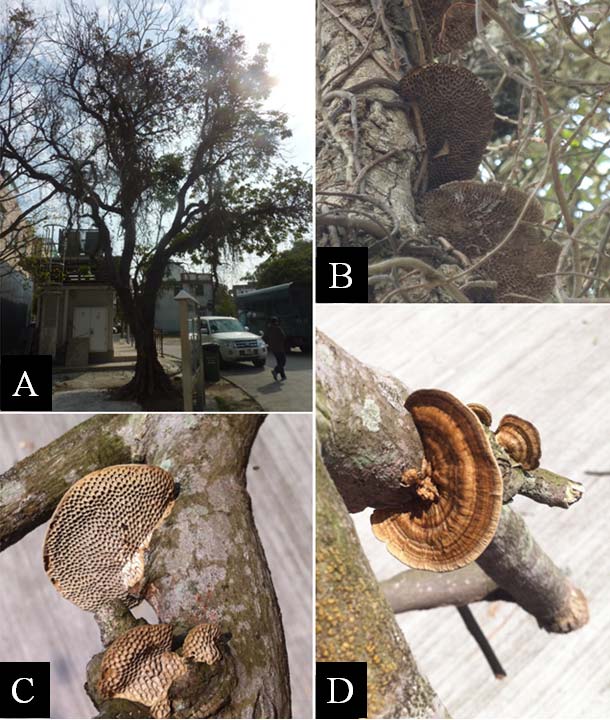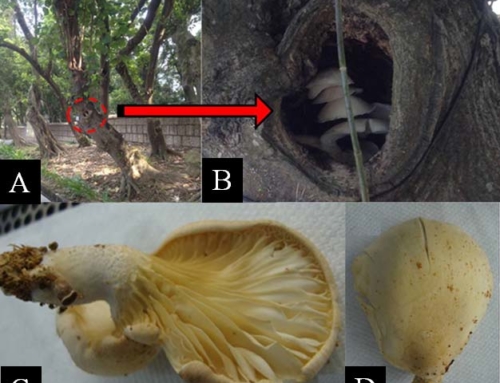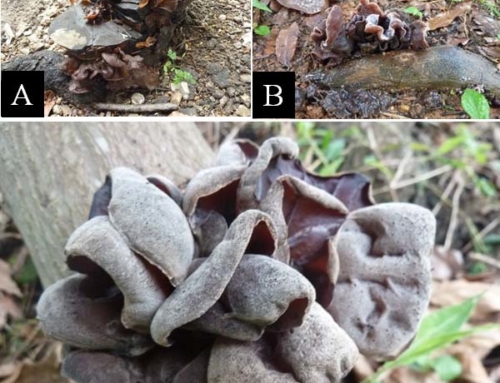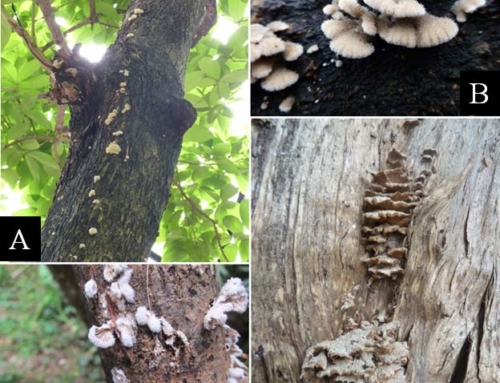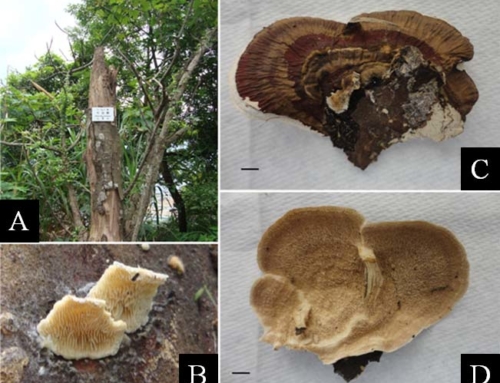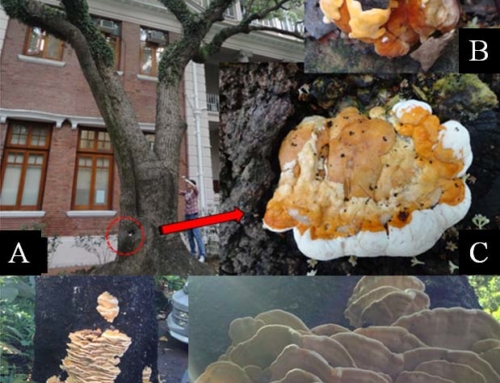Fruiting Body
Fruiting bodies (pilei) annual to perennial, 3-5 cm × 4-8 cm and 0.2 cm thick, solitary or in clusters, pileate, flabelliform to semi-circular bracket, broadly or narrowly attached to the substrate or almost stipitate, thin, flexible and coriaceous when dry, upper surface concentrically zoned, ochraceous to dark brown; pore surface with grayish to ashy bluish tint, pores angular to hexagonal, very variable, mostly 2 per mm; spores ellipsoidal, smooth-walled hyaline.
Distribution and Host Range
This fungus has a worldwide distribution. Locally it is commonly found on broadleaved trees such as Delonix regia, Ficus microcarpa and Dimocarpus longan in urbanised setting along roadsides, on slopes and in parks.
Signs and Symptoms
Fruiting bodies of this fungus are mainly found on dying/dead branches, dead trees as well as aged pruning cuts.
Pathology
It is a saprotrophic fungus with the ability to cause white rot decay on dead and decaying wood tissue.
Management and Control
Risk category: Insignificant (GREEN) Although there is insignificant concern on tree health and structural stability due to the presence of this fungus, the trees should be checked for the presence and extent of localised decay in the region where fruiting bodies are observed. Dead branches and branches with weak attachment observed with sign of this fungus should be removed.
Citation: Note on Common Wood Decay Fungi on Urban Trees of Hong Kong

